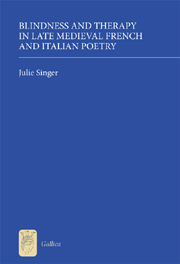Book contents
- Frontmatter
- Contents
- In loving memory of Mrs Doris Patz artist, benefactress, friend
- List of Illustrations
- Acknowledgements
- Introduction: On Rhetoric and Remedy
- Chapter 1 The Love-Imprint
- Chapter 2 Medical Blindness, Rhetorical Insight
- Chapter 3 Irony, or the Therapeutics of Contraries
- Chapter 4 Metaphor as Experimental Medicine
- Chapter 5 Metonymy and Prosthesis
- Chapter 6 Blindfold Synecdoche
- Epilogue. Just Words
- Bibliography
- Index
- Already Published
Chapter 3 - Irony, or the Therapeutics of Contraries
Published online by Cambridge University Press: 12 September 2012
- Frontmatter
- Contents
- In loving memory of Mrs Doris Patz artist, benefactress, friend
- List of Illustrations
- Acknowledgements
- Introduction: On Rhetoric and Remedy
- Chapter 1 The Love-Imprint
- Chapter 2 Medical Blindness, Rhetorical Insight
- Chapter 3 Irony, or the Therapeutics of Contraries
- Chapter 4 Metaphor as Experimental Medicine
- Chapter 5 Metonymy and Prosthesis
- Chapter 6 Blindfold Synecdoche
- Epilogue. Just Words
- Bibliography
- Index
- Already Published
Summary
Ainsi va des contraires choses: Les unes sont des autres gloses; Et qui l'une en veult defenir, De l'autre li doit souvenir.
So it is with contraries: opposites gloss each other, so that whoever wants to define anything must remember its opposite.
Jean de Meun, Roman de la RoseLate medieval medical texts bear witness to a coherent and complex construct of the eye and its function, and a well-developed typology of ocular dysfunctions identified with an array of diagnostic tools. Fourteenth-century medical and surgical treatments for visual impairment, on the other hand, remain somewhat limited: with ointments and dietary regimens comprising the bulk of therapeutic options, surgeries and eyeglasses are relegated to a last resort. In other words, while late medieval medical theorists have elaborated a standard physiological model of the eye, medical and surgical practitioners have a relatively narrow range of therapies at their disposal, among which those with the greatest potential for effectiveness – eyeglasses and surgery – remain controversial and, in the latter case, high-risk. In the face of such a gap between theory and practice, between diagnosis and cure, there is ample space for a different sort of remedy altogether, a rhetorically based cure that enables its practitioners to explore the therapeutic potential of high-risk treatments without realizing their potential for bodily damage. These poetic experimentations with remedies for blindness range from verbalized variations on medical treatments to radical departures from contemporary practice.
- Type
- Chapter
- Information
- Publisher: Boydell & BrewerPrint publication year: 2011



